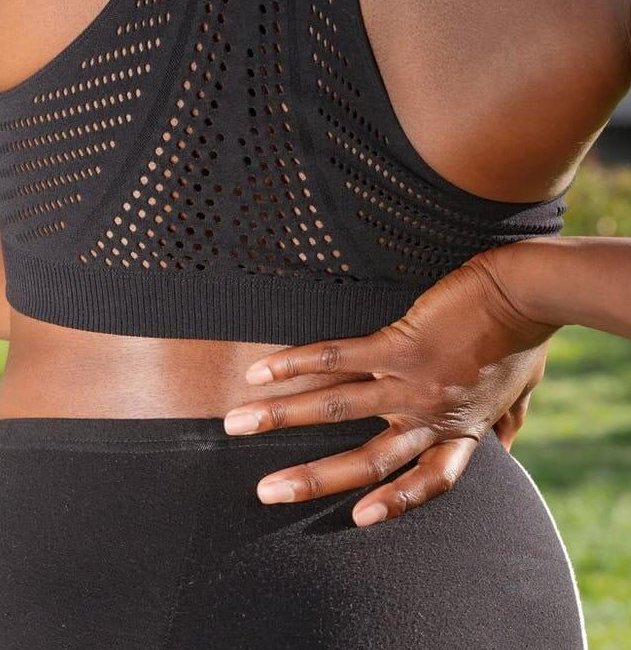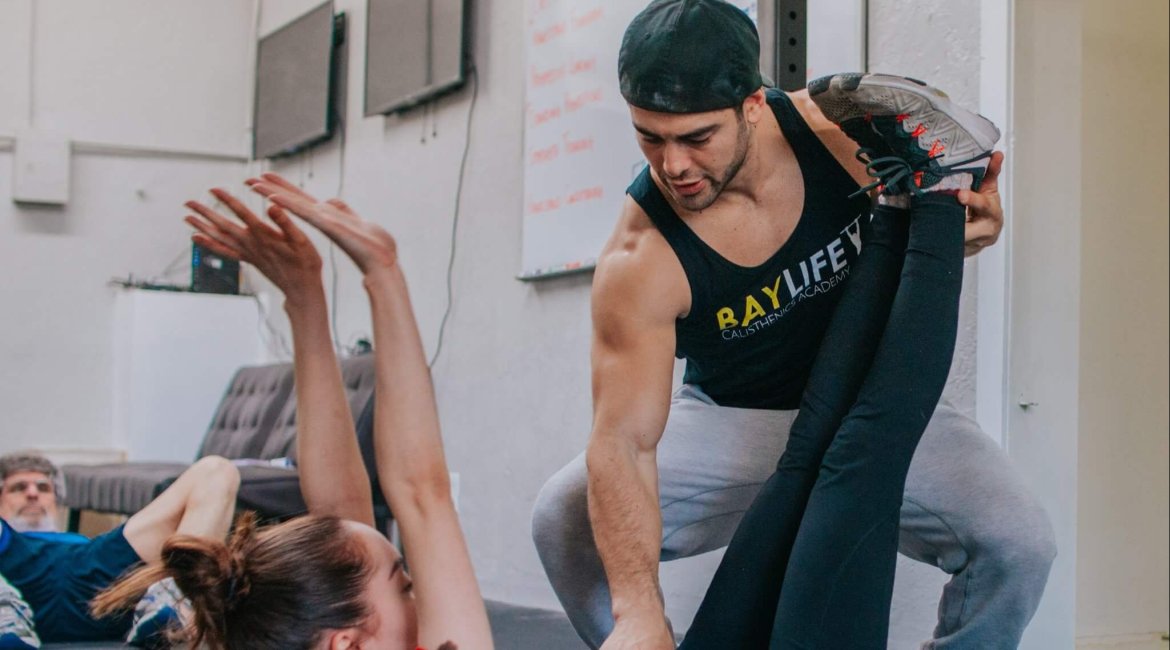According to a recent study from the Health Policy Institute, “16 million adults — 8% of all adults — experience persistent or chronic back pain.” This pain is often located within the lower back area. For many, this can be considered a sign of aging or related to a specific injury, accident, or pre-existing health condition. For example, you may begin to experience lower back pain after incorrectly lifting a heavy object.
However, while identifying the cause of lower back pain can be useful when seeking out treatment from a healthcare professional, it’s also important to find ways to alleviate this pain. After all, daily pain can have a wide-ranging impact on your life – causing you to withdraw from your daily activities. In some cases, it can impact your ability to work and support yourself financially.
Chronic pain can also lead to a range of mental health struggles. For example, those dealing with back pain are also more likely to experience high levels of stress and anxiety. This is particularly concerning when you consider the fact that high levels of stress can also cause back pain, meaning you could be getting caught in a dangerous and repetitive cycle.
Thankfully, as back pain impacts such a large percentage of the population, there are many different ways to tackle it. However, one of the most effective is assisted stretching.
What is lower back pain?
Lower back pain is a symptom as opposed to a condition within itself and has many possible causes. For example, lower back pain could be caused by:
Muscle strain/sprains
Herniated discs.
Osteoporosis/Osteoarthritis.
Infections.
Bladder or kidney infections.
Kidney stones.
Inflammation.
Spondylolisthesis.
Sciatica.
Degenerative disc disease.
Joint dysfunction.
Spinal Stenosis.
Pregnancy.
Accident/Injury.
High levels of stress.
High levels of anxiety.
Many of the aforementioned conditions could cause pain to begin in your lower back, before spreading to other regions of your body. For example, sciatica affects your lower back, buttocks, and legs (i.e., any area of your body where the sciatic nerve is present). As such, it’s crucial that you resolve these issues sooner, rather than later.
What does lower back pain feel like?
The nature of the lower back pain you experience will vary, depending upon the cause. For example, those dealing with muscle strains describe the pain as a dull, long-lasting ache, whereas a slipped or herniated disc will cause a numb, tingling sensation.
In most cases, you may feel that the muscles in your lower back are much more tense than usual. This causes pain as muscle rigidity places “additional pressure on the blood vessels, which results in reduced blood flow to the muscles”.
However, no matter what kind of pain you are experiencing, it’s important you seek help sooner rather than later. This will help you to feel more like yourself again by identifying the root of your pain and finding ways to manage it moving forward. As mentioned previously, lower back assisted stretching can be a great way to reduce lower back pain.
How can I reduce lower back pain?
There are many different ways in which you can treat (and reduce) lower back pain. For example, you can:
Identify the cause. Identifying the cause of your pain is often the most effective way to treat it. This is because you’ll then be able to determine whether this is a temporary condition that will heal itself, or if you need to seek out further help and assistance.
Consult with your doctor. In most cases, back pain will ease naturally over time, especially if it is caused by a minor strain or muscular injury, as the body has systems in place to heal itself. However, if your pain persists and begins to interfere with your day-to-day activities, it’s important that you consult with a doctor sooner rather than later. This is because they can identify the issue and suggest possible treatment to you. For example, this could include prescription medication, or on rare occasions, surgical intervention. However, it’s important to note that the latter is only suggested when the back pain coincides with another health-related complication that requires surgery.
Hot/Cold compresses. Hot and cold compresses are often a great way to reduce pain at the source. Hot compresses, such as microwaveable or chemical pads or a towel soaked in warm water, reduce pain by helping to reduce stiffness and muscle spasms. Cold compresses, such as ice packs, combat pain by targeting inflammation. While you may find that one works better than the other depending upon the kind of pain you experience, many people find alternating between the two during a pain flare up can be incredibly beneficial, perhaps even providing immediate relief.
Take pain medication. Various medications can be used to help alleviate lower-back pain – and you often do not need a prescription as plenty of painkillers can be bought over the counter. For example, anti-inflammatory painkillers such as Ibuprofen are useful as they target the source of pain by blocking pain-inducing enzymes. If your pain persists, it may be worthwhile to consult with your doctor regarding stronger medications that may prove to be useful.
Staying active. When in pain, it’s only natural to want to rest as much as possible. However, many studies have found that inactivity can make pain in your lower back worse. For example, it can cause the “muscles and the joints of the lumbar spine to become stiff, which can increase pressure on the lower back.”
Assisted stretching. As mentioned above, assisted stretching can be instrumental when it comes to alleviating lower back pain – read this guide to find out more.
Why does assisted stretching provide relief from lower back pain?
There are many reasons why assisted stretching can provide relief from lower back pain. This is because stretching:
Reduces muscle tension.
Releases pain-reducing endorphins.
Improves flexibility and mobility.
Improves your posture.
Reduced muscle tension.
Tension within our muscles is often one of the key contributors to chronic pain, as it means the muscles are not able to properly relax. Stretching can reduce muscle tension by strengthening weaker muscles and allowing them to function appropriately. This means you may feel immediate relief after an assisted stretching session.
Pain-reducing hormones.
Gentle exercises, such as stretching, can help combat pain as they trigger our body’s production of pain-reducing endorphins. Endorphins, such as serotonin, provide release from pain as they “interact with the receptors in your brain that reduce your perception of pain.” As the release of these endorphins is gradual, and can occur for some time after the exercise is complete, you may notice that a single session helps to reduce the pain you are feeling quite considerably.
Improved flexibility and mobility.
Back pain is often associated with mobility issues or a loss of flexibility. There are many reasons for this. For example, the back pain may be the product of a mobility-limiting condition, or it may encourage you to be more sedentary, causing the muscles to weaken. Assisted stretching can help to gradually improve your flexibility over time. As this often coincides with enhanced mobility, you may then find it easier to return to your usual daily routine, or reintroduce exercise in your schedule.
Improving your flexibility is also a great way to improve your general level of fitness, which can transform your life quite considerably. For example, it can help to alleviate some of the signs of aging such as lowered mobility, or even combat weight loss.
Improved posture.
According to a recent study, poor posture or slouching can, “place strain on already sensitized muscles and soft tissues. This strain may increase tension in the muscles, which may, in turn, cause pain.” As stretching reduces strain throughout your body, it can work to help you improve your posture – therefore alleviating (and in some cases, eliminating) the pain you are dealing with. Thankfully, there are also many other benefits associated with improved posture, such as enhanced confidence!
What would an assisted stretching session look like?
At iFlex Stretch Studios, our assisted stretching sessions are designed to increase your range of motion, reduce tension, pain, and stress and increase neurological control. As such, they can be an incredibly effective way to reduce lower back pain and other complications.
Your stretching routine will be carefully tailored to your unique needs, abilities, and goals. As such, this means that every routine we offer is slightly different – curated by a talented member of our team who will work in conjunction with you to put together a range of exercises that deal with whatever issues you may be dealing with. We believe that this approach provides you with optimal results.
However, a lower back assisted stretching routine may include a mixture of the following stretches:
Yoga positions. This could include specific positions such as child’s pose, the downward-facing dog, and the sphinx pose – all of which are designed to promote better flexibility.
Knee-to-chest stretches. This involves lying flat on your back and drawing your knees towards your chest. This can reduce lower back pain by stretching out your back muscles and reducing any pressure that is based on your spine.
Spinal twists. This is a standing position where you simply rotate your spine from side to side. This increases flexibility and mobility within the region, while also increasing blood flow in the area.
Seated spinal twists. This position is similar to a traditional spinal twist, only it is performed when seated or leaning against the wall. This offers the same benefits, while also encouraging you to open your hips.
Pelvic twists. Pelvic twists are similar to spinal twists, only they target the pelvic region instead. These exercises are great for building strength in your lower lumbar muscles, and can also reduce any tension placed on your spine and pelvis. This is particularly important as your pelvis supports the alignment of your spine.
Pelvic lifts. To complete a pelvic lift, you must lie flat on your back and lift your pelvis into the air. In some cases, weights may be used to increase the intensity of the stretch. Either way, it can be a great way to build and strengthen your lower back muscles, alongside your thighs and glutes.
If this is your first introduction to regular stretching, don’t worry – your practitioner will not throw you in the deep end. In fact, each of the above stretches can be modified to better match your abilities or ensure the right areas and muscles are targeted during your time together. Furthemore, as this is an assisted stretching session, they’ll also guide you into each position or stretch, which means you’ll develop the right technique should you later replicate these stretches at home. Many people find an assisted stretching routine to be similar to a massage, though it does require a little more effort on your end than a typical massage session!
After your session, your practitioner may also apply Kinesio-tape. This is a form of body tape that can be applied to any area of your body, providing you with extra support. It can help relieve tightness and pain, while also ensuring you do not lose any flexibility. This is because the tape is “designed to mimic the skin’s elasticity so you can use your full range of motion”
Get in touch today to find out more!
If you’d like to find out more about assisted stretching or would like to book your first session, please do not hesitate to get in touch today. A member of our friendly team would be happy to answer any questions you might have and can provide you with guidance and advice pertaining to any issues you are dealing with.
Before our first session, we’ll discuss your current abilities with you in order to curate the perfect stretching routine. This will help you alleviate back pain, while also ensuring that the issues you are dealing with become a thing of the past.




